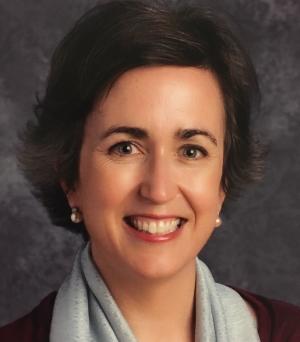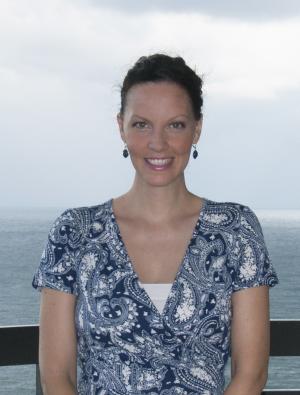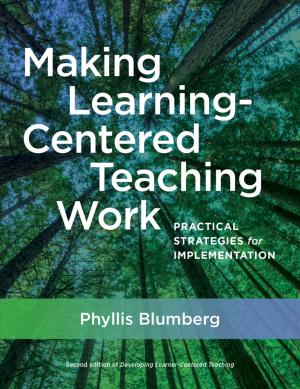Resources
In this time of uncertainty and grief, religious leaders need new and old imaginations to unleash the power of liturgy and sermons to heal, comfort, and inspire. What intellectual, spiritual and creative wells can be drawn upon to address the suffering of the people? Dr. Nancy Lynne Westfield hosts Dr. Lisa L. Thompson (Vanderbilt University) and Dr. Richard Voelz (Union Presbyterian Seminary).
How is the pandemic a cause of revelation? Resisting the sink into doom, and rather unveiling opportunities for hope, might be the challenge of the moment. Dr. Nancy Lynne Westfield hosts Dr. Tina Pippin (Agnes Scott College).

One of the most significant challenges of teaching exclusively online is the balance between synchronous and asynchronous teaching and learning times. I have found a balance to be necessary, as not all material is conducive to engagement during an eternal, synchronous, live Zoom meeting. While we may feel pressure to spend a certain amount of time on synchronous meetings in order to demonstrate academic rigor, the fact is that a lot of learning does not necessarily take place there, unless the time is highly structured and engaging for everyone. First, we need to think through which learning tasks are best achieved asynchronously. Which tasks are relatively simple to execute, best done at one’s own pace, and purposeful toward achieving a greater learning goal? While reading articles and books certainly fall into this category, so do creating video responses, contributing to asynchronous discussion boards, and taking short, open-book quizzes to check for understanding of the basics. I recommend synchronous sessions only those tasks which cannot be completed asynchronously to the same effect. These sessions should be a time for students to share their discoveries from the asynchronous time, ask questions of each other and the instructor, and they should not be too long. I find a structured discussion achieves these ends, keeping everyone engaged while digging deeper into a reading assignment. The blend of the synchronous and the asynchronous creates a rhythm, something I think each of us craves in this uncertain time. The following rhythm has been working for me and my students as we adjust to learning exclusively online. In short, the rhythm goes like this: Begin a reading assignment, along with a reading guide, like this one. One, asynchronous video check-in via FlipGrid with initial thoughts about the reading One, synchronous online “fishbowl” discussion during the week In the live, online “fishbowl” style discussion, some students participate in the conversation (inside the ‘fishbowl’), while others observe, take notes, or present different material. Here’s how I structure the discussion, which could work on any video chat platform: 🖐️🖐️ Role: Live discussion participant Live discussion participants answer questions asked by facilitators and ask questions of each other, as needed 🤠🤠🤠 Role: Facilitators Facilitators create questions based on the text and ask them of the group in the order that seems most appropriate. Gather questions on a common document prior to the conversation. 📕📕 Role: Vocabulary Vocabulary leaders prepare Google Slides featuring four vocabulary words from the text, along with their paragraph numbers and definitions; present live before the discussion. 📚📚 Role: Background research Background researchers create Google Slides featuring information about the author and publisher of the reading. Include at least nine facts. 🤐 📝 Role: Note taker Sample notes pages Role: Live Kahoot Maker The live Kahoot maker will listen carefully to the conversation and create a Kahoot for everyone to take immediately after the conversation. The winners will get a prize!! There are many ways to modify this structure—perhaps hold two sessions with micro-groups of people or require different elements from each role. It’s my hope that a highly structured online conversation will clarify everyone’s role in synchronous meetings, encourage deep, sustained student engagement with the material, as well as surface new learning that can only come about from community discussion.
In this time of uncertainty and grief, religious leaders need new and old imaginations to unleash the power of liturgy and sermons to heal, comfort, and inspire. What intellectual, spiritual and creative wells can be drawn upon to address the suffering of the people? Dr. Nancy Lynne Westfield hosts Dr. Lisa L. Thompson (Vanderbilt University) and Dr. Richard Voelz (Union Presbyterian Seminary).

There’s no one way to go about developing a course. More often than not, it’s an individualized process driven by standards, one’s academic field, the course intent, and personal preferences, and habits. Below is one way to approach the development of your online or hybrid course. FIRST Prepare your syllabus and outline your course. Choose the course structure that best fits your student learning outcomes and the pedagogy appropriate to that end: fully online, hybrid, tutorial, synchronous or asynchronous, concepts-mastery, competency, skill-attainment, scaffolding, etc. Using a mindmap or a scope and sequence worksheet to plot your course can be very helpful. Determine the assessment of learning practices or instruments you will apply. Discern how much you really need in your syllabus and what best resides on your online course site. Hint: you really only need a two-page (printable) syllabus! SECOND Prepare the course learning support content: course reading checklist, handouts, bibliography, assessment rubrics, course project descriptions, work samples or models, etc. Post all documents in PDF format unless they are editable worksheets. Determine the student learning activities that support your course objectives, including assignments, quizzes, exams, course projects, discussion forums, exercises, etc. Be sure the student learning activities align with course learning outcomes. If your LMS uses competencies frameworks, be sure to align and link your student learning activities to the appropriate competencies framework. Rule of thumb: do not teach what you will not assess. THIRD Write the copy for your online course, including Induction components: introductions, orientation, transitions, closure, directions, instructions, prompts for forum discussion or exercises, session and course closure session, etc. Determine the pedagogical function of the discussion forums (discussion and dialogue, analysis, providing evidence of comprehension, critical reflection, theological interpretation, reflection on experience, etc.). Not all online courses or course sessions require student “discussion.” Avoid superfluous material: align learning objectives with content, student learning activities., and assessments. Repeat: do not teach what you will not assess. FOURTH Determine interactive and media components for your online course. The online environment is a visual and experiential platform, exploit that advantage to enhance the learning experience. Make wise choices and applications of media: recorded Powerpoint slides (Do not post Powerpoint format files), videos (a 20-minute video is too long), internet sites, recordings, etc. The criterion is that every component needs to have a pedagogical function related to your learning outcomes. Avoid superfluous material: align learning objectives with content, student learning activities, and assessments. Again: do not teach what you will not assess. THE LAST THING YOU WANT TO DO The last thing you want to do is set up your online course site. Determine the course format (weekly, thematically, etc.) Create a course banner to give your course site personality. Create your course modules using your copy from step 3 (copy and paste). Create your online Gradebook. Assignments you create should automatically populate your Gradebook. Determine how you will use the Gradebook (e.g., will you make it visible to your students?). Link writing assignments to the Turnitin function on your LMS if your institution uses it. Ask a colleague or your instructional design staff to review your course site.
The pandemic has caused questions and new curiosities to come alive in this moment. Learning through discovery is of mutual benefit to teacher and learner. Dr. Nancy Lynne Westfield hosts Dr. Mary Hess (Luther Seminary).

With the spike of mental health issues, and the fear, loss, and uncertainty students are facing in the middle of this coronavirus pandemic, connecting with students is critical. In some cases, life-saving. Yet, amid our transition to online teaching, the complete disruption of “normal,” and personal issues to deal with, creating a connection with students can seem prohibitively difficult just when we need it most. Can this time of crisis present an opportunity for us to be conduits of hope, assurance, and inspiration to students? In a time when students are fearful as they face unchartered territory, we can help calm their fears and encourage them, by sharing our own struggles and how we overcame them. Our personal stories of overcoming challenges communicate to students that everything will be ok—that they will make it through this dark time. When my institute, Palm Beach Atlantic University, responded to our county order to close the campus, many students were distressed and scrambling to find a new residence. Seniors felt great loss as the reality sank in that they may not see their roommates, classmates, or professors again, and that there would likely be no graduation ceremony. How could I reassure and comfort the class? In our live conference, I talked about my own struggles. I began by admitting that I had uncertainty—I couldn’t yet answer most of their questions about residence, graduation, or internships. I disclosed that for me this pandemic had triggered memories of a trauma I experienced several years ago and had heightened my anxiety, and that with the world “falling apart,” I, too, was finding it hard to stay focused and motivated. I added, with a bit of humor, that the most stressful item keeping me awake at night was fear of running out of toilet paper and diapers for my baby! (Focusing on the minute is a typical response to trauma.) Then, I shared the story of when I survived a near-death experience and a difficult recovery. I made it through, and in the end, I was much stronger for it. Sharing our struggles builds immediate rapport with students. They realize that we’ve lived through hardships like theirs. We survived, and so will they. Our times of crisis—whether relational, health, financial, or otherwise—built our character, made us wiser, helped define who we are today, and revealed that we were stronger than we thought. This is a message that our students need to hear! It’s risky and humbling to share the story of one’s trauma or hardships, but our vulnerability creates a safe space that invites students to respond with openness and honesty. Letting students get to know us provides the personal connection that increases student learning. This atmosphere of student learning and engagement is vital for our current online settings. How can you connect to students in your online classes? Here are some practical suggestions: Create time and space in your class for connecting. Set aside the first few minutes of class time (or a conference) to give the students an opportunity to discuss how they are doing. It doesn’t need to be emotional or drawn out—you can say, “We only have a few minutes, so just take just a few seconds each and let us know how you are doing.” Assure them that it’s fine to be “great” as well. Jot down any major issues. Follow up with those students when the class is next together—perhaps invite them to give an update. (Remembering their comments and following up is a powerful demonstration of a truly caring professor!) These few moments provide insight into how the class is doing overall and can help you know their learning needs. Tell the students you support them, you care about them, you are thinking about them. These simple words can be life-giving—assuring the students that they are not alone. Remember, many of our students lack positive role models and a support network. You might be the only voice of reassurance and comfort to your students in this time of crisis. Communicate to the students that you understand and can relate to the struggles they are facing. This has never been easier because we actually are facing the same issues! Share some of your own difficulties in working off campus, changing your routines and schedule, and needing to stay isolated. Create a venue for students to share with one another and support each other, such as a discussion group. Have you connected with your students in other ways online? Please share below.

This is a substantially expanded and enhanced revision of Phyllis Blumberg’s acclaimed and bestselling book, Developing Learner-Centered Teaching: A Practical Guide for Faculty (Jossey-Bass, 2009). This easy to follow how-to-guide provides faculty with both a thorough introduction to this evidence-based approach to teaching and practical guidance on how to progressively implement it to strengthen the impact of their teaching. It demonstrates how they can integrate learning-centered teaching into their classroom practice without sacrificing content and rigor, and how to positively engage students in the process by demonstrating its impact on their mastery and recall of key concepts and knowledge. An added outcome, given that learning-centered teaching is correlated with improved student learning, is the resulting assessment data that it provides faculty with the measures to meet the increased demands by accreditors, legislators and society for evidence of improved teaching and learning outcomes. Phyllis Blumberg demonstrates how to use rubrics to not only satisfy outside requirements and accreditation self-studies but, more importantly, for faculty to use for the purposes of self-improvement or their teaching portfolios. She provides examples of how the rubrics can be used to ascertain whether college-wide strategic plans for teaching excellence are being met, for program review, and to determine the effectiveness of faculty development efforts. The book includes the following features: - Boxes with easy-to-implement and adaptable examples, covering applications across disciplines and course types - Worksheets that foster easy implementation of concepts Rubrics for self- assessment and peer assessment of learning-centered teaching - Detailed directions on how to use the rubrics as a teaching assessment tool for individuals, courses, and programs - List of examples of use classified by discipline and type of course Phyllis Blumberg offers Making Learning Centered Teaching Course Design Institutes and workshops on this and other teaching and assessment topics. Half day to multiple day modules. (From the Publisher)

Research shows that online education, when designed and facilitated well, is as effective as traditional campus-based instruction. Despite the evidence, many faculty perceive online education as inferior to traditional instruction—and are often quite vocal in their skepticism. Simultaneously, however, more and more students are seeking online courses and degree programs. Thrive Online: A New Approach to Building Expertise and Confidence as an Online Educator is an invitation for the rising tide of online educators who are relatively new to teaching online, and also for those more experienced instructors who are increasingly frustrated by the dominant bias against online education. Readers will find: • An approach that empowers online educators to thrive professionally using a set of specific agentic behaviors • Strategies for approaching conversations about online learning in new ways that inform the skeptics and critics • Strategies that celebrate the additional skills and proficiencies developed by successful online educators • Guidance for educators who want to feel natural and fluent in the online learning environment • Guidance for enhancing the user-centered nature of online spaces to create student-centered learning environments • Encouragement for online educators to pursue leadership opportunities The internet is changing how people communicate and learn. Thrive Online: A New Approach to Building Expertise and Confidence as an Online Educator offers guidance, inspiration and strategies required to adapt and lead higher education through this change. This book is for higher education instructors who are seeking community, a sense of belonging, and the professional respect they deserve. Thriving is not a reaction to our environment, but rather a state of being we can create intentionally for ourselves. The time has come to change the conversation about online education. Add your voice – join the community and #ThriveOnline. (From the Publisher)

What does it mean to be a productive professor in higher education? What would it feel like to have more peace and productivity? To have nothing fall through the cracks? The Productive Online and Offline Professor is written for today’s busy higher education professional. Through an exploration of what it means to make work meaningful, this book offers practical strategies and tips to support higher education professionals in efficiently managing and effectively using a wide range of technologies and productivity tools. Higher education instructors will find this guide helps them to fulfill their teaching roles with excellence and to build engaging relationships with students while also successfully managing other priorities in their professional and personal lives. The Productive Online Professor assists those who teach online and blended courses with managing their personal productivity. Faculty are often expected to provide support and feedback to learners outside of normal work hours in non-traditional classes. Programs that are designed with more asynchronous content may cause faculty to perceive that it is difficult to ever press the “off button” on their teaching.The author offers guidance and suggests software tools for streamlining communication and productivity that enable faculty to better balance their lives while giving rich feedback to students. Part 1 addresses the challenges in defining productivity and presents a working definition for the text. Part 2 describes the ability to communicate using both synchronous and asynchronous methods, along with ways of enriching such communication. Part 3 describes methods for finding, curating, and sharing relevant knowledge both within one’s courses and to a broader personal learning network (PLN). Part 4 examines specific tools for navigating the unique challenges of productivity while teaching online. It includes ways to grade more productively while still providing rich feedback to students. Part 5 shares techniques for keeping one’s course materials current and relevant in the most efficient ways possible. The Productive Online Professor is a practical guide for how to provide high quality online classes to diverse students. This book shares specific technology and other tools that may be used in charting a course toward greater productivity. It is intended to be a professional resource for fulfilling our roles with excellence and joy, while managing other priorities in our personal and professional lives.(From the Publisher)